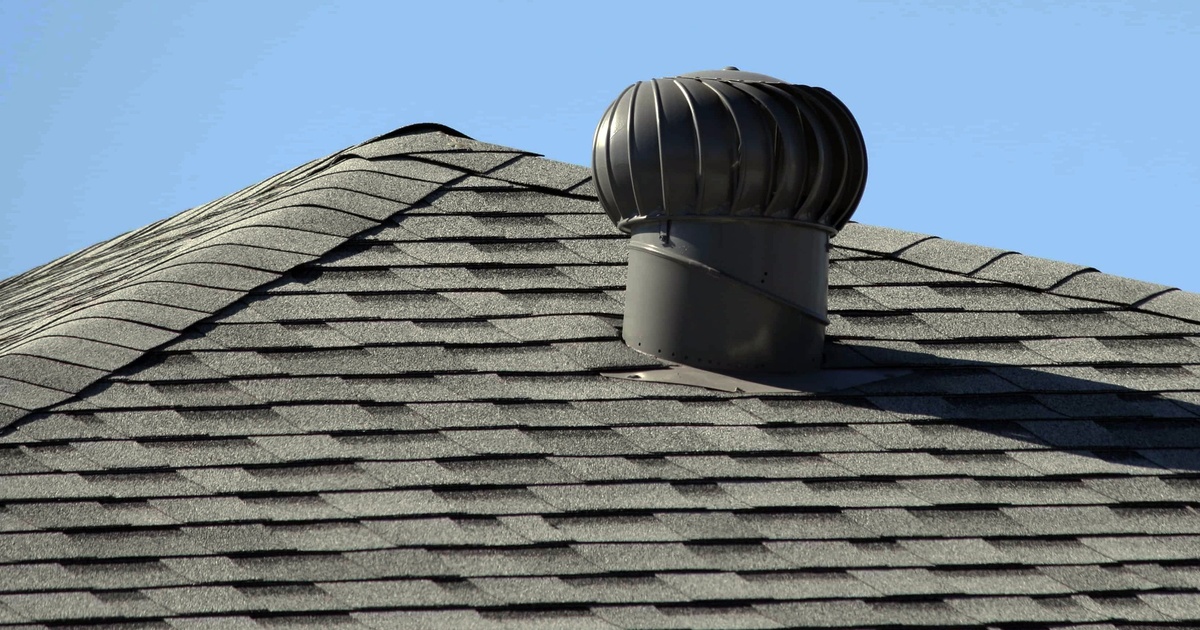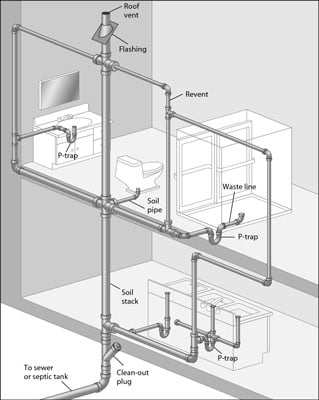This great article on the next paragraphs on the subject of What Is a Plumbing Vent and Why Is It Important is highly insightful. Read on and make your own personal assumptions.

Proper ventilation in plumbing systems is frequently overlooked, yet it is crucial for maintaining the capability and security of your home's plumbing. Air flow aids manage atmospheric pressure, stop the buildup of unsafe gases, and make sure the efficient elimination of waste. In this overview, we will discover the importance of correct plumbing air flow, exactly how it works, and the benefits it offers your pipes system.
How Ventilation Functions in Plumbing Systems
Air Pressure Regulation
Proper air flow preserves well balanced atmospheric pressure within the pipes system. When water flows with pipelines, it displaces air. Without sufficient air flow, this displacement can create negative pressure, bring about slow down drains or siphoning of water from traps, which can trigger unpleasant smells to leak right into the home.
Protecting Against Sewer Gas Buildup
One of one of the most vital features of plumbing vents is to prevent sewage system gases, such as methane and hydrogen sulfide, from gathering within the home. These gases can pose major health and wellness risks and are highly flammable. Vent pipes permit these gases to leave securely outdoors.
Aiding in Waste Elimination
Air flow helps in the efficient removal of wastewater by preventing airlocks in the drain system. When air can move openly via the vents, it permits water and waste to move efficiently with the pipelines, reducing the threat of blockages and backups.
Benefits of Proper Ventilation
Enhanced System Performance
Appropriately ventilated pipes systems run a lot more effectively, with less clogs, faster draining pipes, and less stress on the pipelines. This effectiveness extends the life expectancy of the pipes system.
Improved Air Quality
By protecting against sewer gases from entering your home, correct air flow contributes to better indoor air high quality, making your living atmosphere healthier and extra comfortable.
Protecting Against Water Damages
Appropriate ventilation aids avoid water from being siphoned out of traps, which can lead to sewer gases going into the home and causing water damage over time.
Steps to Ensure Appropriate Air Flow
Consulting Plumbing Codes
Constantly get in touch with local pipes codes when designing or customizing your pipes system. These codes give the needed guidelines for appropriate airing vent and ensure your system satisfies security criteria.
Normal Examination and Maintenance
Normal evaluations can assist identify prospective air flow problems prior to they end up being significant issues. Upkeep jobs, such as cleaning up air vent pipes and looking for clogs, are necessary for maintaining the system in good working order.
Expert Setup
For brand-new setups or significant alterations, it's a good idea to hire a professional plumbing technician. They have the experience to ensure the ventilation system is appropriately made and set up according to code.
Comprehending Ventilation in Plumbing
Ventilation in plumbing describes the network of pipes that allow air to stream through the drain system. These vents offer several objectives, including managing air pressure within the pipelines, avoiding sewage system gases from going into the home, and helping in the smooth circulation of wastewater.
Types of Pipes Vents
Main Stack Vent
The primary pile vent, also known as the vent pile, is the main air vent in a plumbing system. It prolongs from the main drainpipe align through the roofing system, permitting gases to run away and fresh air to enter the system.
Branch Vent
Branch vents attach to the main stack vent and serve specific fixtures, such as sinks, bathrooms, and showers. These vents ensure that each component has adequate ventilation to function effectively.
Air Admittance Valve (AAV).
An Air Admission Valve (AAV) is a one-way shutoff that allows air to go into the pipes system without the requirement for a traditional vent pipeline expanding via the roofing system. AAVs are generally made use of in restorations or locations where installing a common vent is unwise.
Signs of Poor Air Flow in Pipes.
Slow Draining Fixtures.
If your sinks, bathtubs, or bathrooms are draining gradually, maybe an indicator of inadequate ventilation. Insufficient air flow can produce a vacuum cleaner effect, making it difficult for water to drain pipes appropriately.
Gurgling Seems.
Gurgling sounds originating from drains pipes are commonly an outcome of air being drawn with water traps because of negative pressure in the pipelines. This is a clear indicator of not enough air flow.
Undesirable Odors.
Sewage system smells inside your home are a red flag that your pipes system is not effectively ventilated. This can indicate that sewer gases are not being adequately vented outside, resulting in possibly hazardous conditions.
Typical Air Flow Blunders.
Poor Vent Sizing.
Utilizing undersized air vent pipes can result in inadequate air flow and stress imbalances in the system. It's necessary to use vents that satisfy the specific needs of your plumbing system.
Improper Vent Placement.
Putting vents too far from the fixtures they offer can decrease their effectiveness. Correct placement guarantees that air can move openly and efficiently via the system.
Disregarding Code Needs.
Building ordinance supply certain guidelines for pipes air flow. Disregarding these codes can cause a system that falls short to work correctly and may bring about costly repair work or health hazards.
Final thought.
Appropriate air flow is an important component of any kind of plumbing system, making certain that it functions effectively and safely. By understanding the significance of air flow, identifying the signs of bad ventilation, and taking actions to maintain your system, you can protect against costly concerns and safeguard your home's air top quality.
4 Things You Should Know About Your Plumbing Vents
What Plumbing Vents Are
Also called a vent stack, a plumbing vent is a vertical pipe attached to your drain line that runs through your roof. The plumbing vent pipe, or plumbing air vent, removes gas and odors from your plumbing system and allows fresh air to enter the pipes, helping the water to flow out of the drain pipes.
What Plumbing Vents Do
Plumbing vents have two basic functions. One of which is to allow unpleasant smelling wastewater and sewer gasses to escape your plumbing system instead of entering your home. Plumbing vent pipes are typically located on roofs, away from windows, to ensure the fumes exit the home completely.
The other function of the plumbing vent is to move fresh air into your plumbing system. This helps move water through every plumbing fixture in your house, like toilets and sink drains. Think of the way in which you need to let a little air into the bottle as you pour soda in order to make the drink flow smoothly.
Different Types of Plumbing Vents
True vent: This is the most common vent option. In simplest terms, a true vent is a vertical pipe attached to your drain line that exits through the roof. They often function as the main vent that other fixtures can connect to. Re-vent pipe or auxiliary vent: Attached to the drain line near specific plumbing fixtures, re-vent pipes run up and over to connect to the main vent. Common vent: Two plumbing fixtures installed on opposite sides of a wall are typically tied into the vent stack using something known as a sanitary cross. Wet vent: This venting option operates as a drain pipe and a vent at the same time. Wet vent drainage systems drain water from one fixture while venting the air from another. Although they’ve been used for over 100 years, wet vent systems have only recently been added to the plumbing code in many areas. If you’re planning on installing one in a bathroom remodel, make sure you check your local code prior to construction. Loop vent: For free-standing fixtures like kitchen island sinks, loop vents are ideal. These vent pipes run under the floor, rise from the P-trap, and create a loop inside the cabinet sink. Air admittance valve: An AAV is a one-way mechanical valve typically installed at the site of the plumbing fixture. AAVs allow venting to occur without having to tie into a larger venting system. They’re ideal for venting fixtures where you aren’t able to easily connect to an existing vent system. Common Plumbing Vent Issues
Although vent pipes typically don’t have water flowing through them, they’re still subject to many typical plumbing issues. For example, clogs are one of the most common problems associated with sewer vent pipes. If your vent pipe gets clogged, all of your plumbing fixtures tied into the vent stack will be affected.
A sink with a slow drain that bubbles and gurgles or a strong sewage smell around your toilet are both indicators that your toilet vent pipe is clogged. Because most vent pipes exit through the roof, old leaves, twigs or even a bird’s nest could be clogging the pipe.
Clogs in your vent pipe system cause a buildup of negative pressure, meaning that water won’t be able to flow out of your home very well. It’s similar to putting your finger over the opening of a straw to trap water inside. When you remove your finger, the water is able to flow out of the straw.
If you suspect you have any blockage in your vent, make sure you have a professional come examine the situation. Left unchecked, a blocked air vent can lead to other costly repairs, like leaks and sediment buildup.
Under Pressure
Pipe vents are essential aspects of a home’s plumbing system. Owning a home means learning about all sorts of things you never put much thought into before. But by understanding as much as you can about the important systems of your home, you can keep those budgets intact and those anxiety levels low.
https://www.homeserve.com/en-us/blog/home-improvement/plumbing-vents/

I recently found that blog entry about Why Plumbing Air Vents Are Important when surfing the internet. Do you know somebody else who is occupied with the niche? Why not share it. Thank you for your time. Revisit us soon.
Book Now!